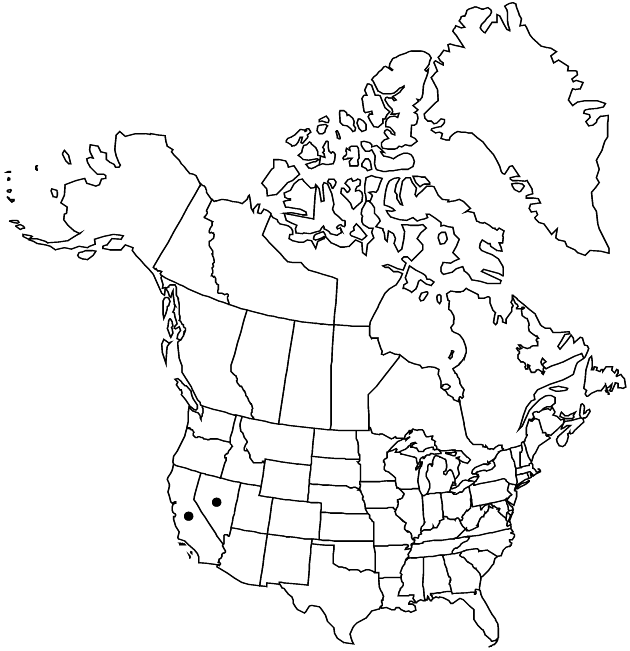Brickellia nevinii
Proc. Amer. Acad. Arts 20: 297. 1885.
Shrubs, 30–80 cm. Stems much branched from near bases, tomentose, gland-dotted. Leaves alternate; petioles 0–1 mm; blades obscurely 3–5-nerved from bases, ovate to cordate, 7–11 × 3–8 mm, bases rounded to subcordate, margins dentate-serrate, apices obtuse, faces tomentose, gland-dotted. Heads (terminating elongate lateral branches) in paniculiform arrays. Peduncles 1–5 mm, tomentose. Involucres cylindric to turbinate, 10–12 mm. Phyllaries 30–38 in 6–7 series, greenish, often red- or purplish-tinged, 3–6 striate, unequal, (recurved, tomentose, gland-dotted) margins scarious (ciliate, apices acute to acuminate); outer lance-ovate, inner lanceolate. Florets 20–24; corollas pale yellow or cream, often purple-tinged, 6.2–7.5 mm. Cypselae 3.5–5 mm, hispidulous; pappi of 18–24 white or tawny, barbellate bristles. 2n = 18.
Phenology: Flowering Aug–Nov.
Habitat: Rock crevices, rocky slopes, desert scrub
Elevation: 300–1900 m
Discussion
Brickellia nevinii appears to be an incarnate form of B. microphylla. The variability in indument often makes distinguishing these species problematic. Brickellia nevinii is sometimes reported to intergrade with B. californica.
Selected References
None.
